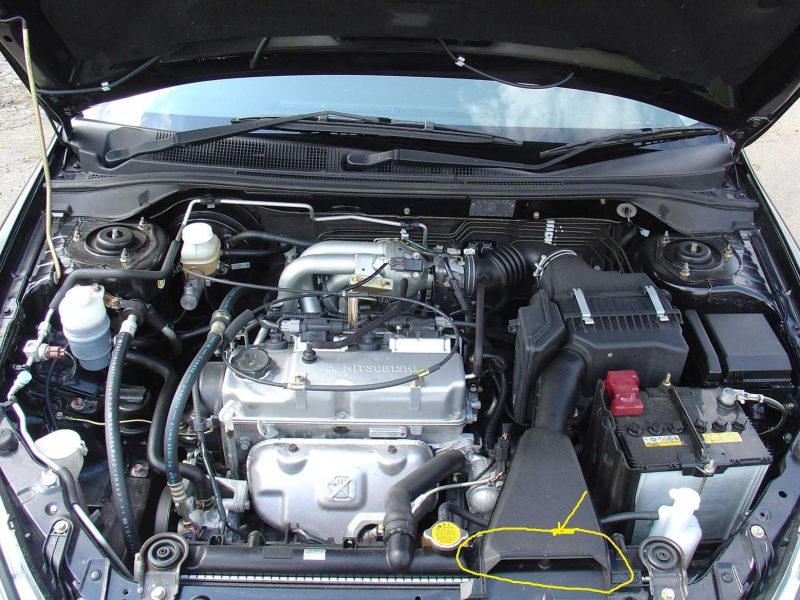Mitsubishi 4G13 Engine Specifications
| Manufacture | Mizushima plant |
| Engine make | Orion 4G1 |
| Years of manufacture | 1983-2007 |
| Cylinder block material | cast iron |
| Power system | Carburetor/injector |
| Type | row |
| Number of cylinders | 4 |
| Valves per cylinder | 3/4 |
| Piston stroke, mm | 82 |
| Cylinder diameter, mm | 71 |
| Compression ratio | 9.5 10 |
| Engine displacement, cc | 1299 |
| Engine power, hp/rpm | 75/6000 85/6000 93/6000 |
| Torque, Nm/rpm | 108/4000 108/4500 113/4500 |
| Fuel | 92-95 |
| Environmental standards | up to Euro 4 |
| Engine weight, kg | 113 (dry) |
| Fuel consumption, l/100 km (Lancer) – city – highway – mixed. |
9.1 5.4 6.9 |
| Oil consumption, gr./1000 km | to 1000 |
| Engine oil | 5W-20 5W-30 10W-40 |
| How much oil is in the engine | 3.3 |
| Oil change is carried out, km | 10000 (better 5000) |
| The operating temperature of the engine, deg. | – |
| Engine life, thousand kilometers – according to the factory data – in practice |
– 250-300 |
| Tuning – potential – without loss of resource |
100+ n.d. |
| Motor installed | Mitsubishi Carisma Mitsubishi Colt (Mirage) Mitsubishi Lancer Mitsubishi Dingo Mitsubishi Space Star Hyundai Excel CMC Veryca Proton Saga Proton Satria Brilliance BS2 Emgrand EC7 Emgrand GL Heyue Tongyue Zotye Nomad |
Faults and repair of Mitsubishi 4G13 engine
Before us is the engine 4G13 family Mitsubishi Orion, working volume of 1.3 liters, born in the 80’s, designed for small cars like Mitsubishi Colt, Carisma, Lancer, Mirage and used in their simplified versions. The motor itself is simple, based on a cast iron cylinder block, with a 12 or 16 valve cylinder head, and all these valves on a single camshaft (SOHC).
There are no hydrocompensators, valve adjustment is carried out every 90 thousand kilometers, valve clearances are as follows: inlet 0.15 mm, outlet 0.25 mm (hot), inlet 0.07 mm, outlet 0.17 mm (cold). Timing belt drive, belt service life is 90 thousand kilometers (it is desirable to change it earlier), when breaking the timing belt on 4G13 bends valves. The engine power system is carbureted (for the first modifications), later the engine became injector.

Together with this engine, its “larger” counterpart, one and a half liter 4G15, and later 4G18, with a working volume of 1.6 liters, was born. Since 2004, the 4G1 (Orion) series began to be replaced by a fresh line of engines 4A9, where our veteran 4G13 was replaced by a new engine 4A90.
Faults of 4G13 and their causes
- Excessive idle, floating revs. Very common problem, sooner or later appears on all 4G1 engines. All to blame for the throttle valve of a peculiar design not withstanding long operation. The problem is solved by buying a new original throttle unit, or the same unit, but modified by third-party manufacturers, where the factory wear problem is solved.
- Vibrations. A common problem of Orion engines that has no definite solution. First you need to check the condition of the cushions, often this is where the problem lies. The issue can be solved by slightly raising the idle speed.
- Difficult starting, does not start 4G13. Check the gasoline pump, if there is frost outside, then, most likely, the plugs are flooded. Do not be surprised, it is not a good idea to operate 4G13-4G15-4G18 in serious minus temperatures.
- Oil burn. The problem occurs on motors with mileage over 200 thousand kilometers (on 4G18 motors after 100 thousand kilometers). It is solved by replacing the piston rings, or better overhaul.
In general, the motor of average reliability and breakdowns are not rare here, except for the above popular problems, there are also a number of smaller ones, and the use of high-quality fuels and lubricants protects from them only partially.
Mitsubishi 4G13 engine tuning
Turbine on 4G13
By and large, tuning of such a small motor is quite strange and designed only for the most ardent fans of their car.
Besides, a good tuning option is replacement of 4G13 SOHC head with 4G15 DOHC with two camshafts, but to the new cylinder head you will need an intake manifold, gasket, belt, plugs, trampler, thermostat, exhaust manifold and some other small things… As a result, compression ratio will increase, traction will improve at the top and slightly worsen at the bottom. Not a bad tuning option.
ENGINE RATING: 4-
